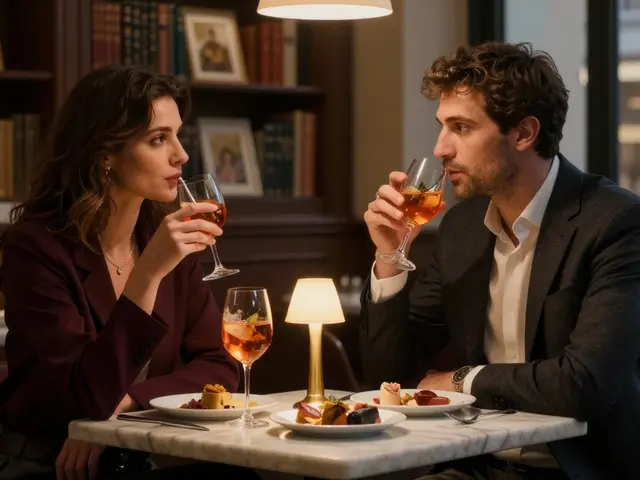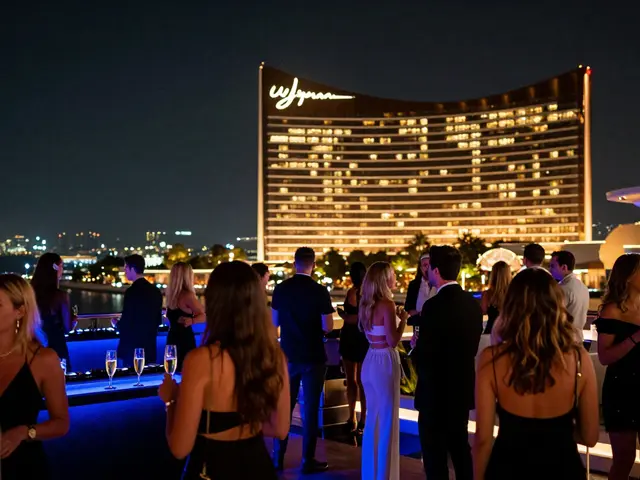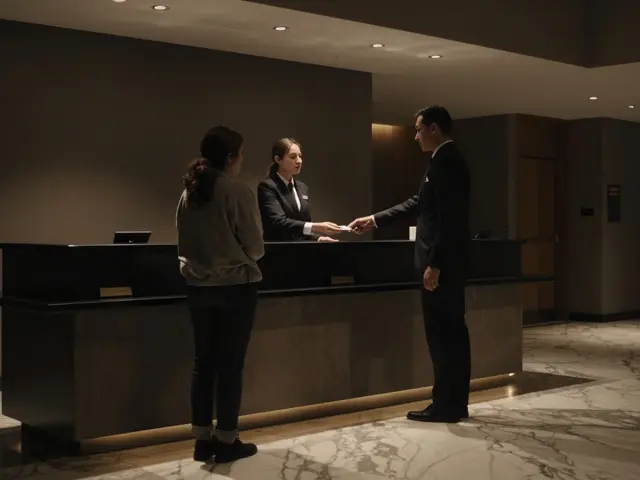
Paris doesn’t sleep when the sun goes down. While tourists flock to the Eiffel Tower by day, locals and savvy visitors know the real magic happens after 9 p.m. This isn’t just about drinking and dancing-it’s about culture, history, and the quiet rhythm of a city that reinvents itself with the night.
The Left Bank’s Hidden Jazz Cellars
Head to Saint-Germain-des-Prés and you’ll find places where the air smells like old wood, cigarette smoke, and espresso. Le Caveau de la Huchette has been swinging since 1946. You won’t find neon signs or bouncers with headsets. Just a basement, a five-piece band, and a crowd that sways without saying a word. It’s not a tourist show-it’s a living archive. Musicians here play Django Reinhardt standards like they’re breathing. No cover charge before 11 p.m., and you can order a €4 glass of Beaujolais while listening to a saxophone that sounds like it’s been through the war.Down the street, Le Petit Journal Montparnasse turns into a jazz lounge after midnight. The walls are covered in black-and-white photos of Sartre and Simone de Beauvoir. You won’t find a menu with cocktails named after Instagram influencers. Instead, they serve crème de cassis with white wine-the classic Kir-in crystal glasses. It’s the kind of place where you’ll hear someone whisper, "Je suis fatigué," and mean it.
Where the Locals Go: The 10th and 11th Arrondissements
Forget the Champs-Élysées. If you want to see how Parisians actually unwind, head to the 10th and 11th arrondissements. This is where the city’s creative class lives, works, and drinks after hours.Le Chien de la Rue in the 11th is a no-frills wine bar with a chalkboard listing 12 natural wines by the glass. The owner, Claire, pours them herself and tells you which one goes best with the charcuterie board she made that afternoon. No one takes photos. No one asks for the Wi-Fi password. You just sit, sip, and listen to French indie rock playing softly from an old Bluetooth speaker.
Across the canal, Bar du Marché in the 10th opens at 10 p.m. and doesn’t close until 5 a.m. on weekends. It’s not a club. It’s a neighborhood hangout with mismatched chairs, a jukebox full of 90s French pop, and a bartender who remembers your name after one visit. They serve croque-monsieur at 2 a.m. and you’ll see students, artists, and nurses from the nearby hospital all sharing the same table.
Underground Clubs and Secret Speakeasies
Paris has more secret bars than you think. You won’t find them on Google Maps. You need a tip, a friend, or a bit of luck.Little Red Door is tucked behind an unmarked door in the 10th. No sign. Just a red door. You knock once, and if the bouncer likes your vibe, you’re in. Inside, it’s dim, cozy, and loud with bass-heavy electronic music. The cocktails? Handcrafted with ingredients you’ve never heard of-fermented pear, smoked salt, black garlic syrup. One drink costs €18. It’s worth it.
Then there’s Le Perchoir, a rooftop bar on the 6th floor of a building near the Seine. You climb a narrow staircase past graffiti-covered walls. At the top, you’re greeted by city lights, a DJ spinning French house, and a crowd that looks like they stepped out of a Wes Anderson film. The view of the Eiffel Tower at midnight? Unbeatable. But don’t expect a table. You stand, drink, and talk to strangers who become friends by 2 a.m.
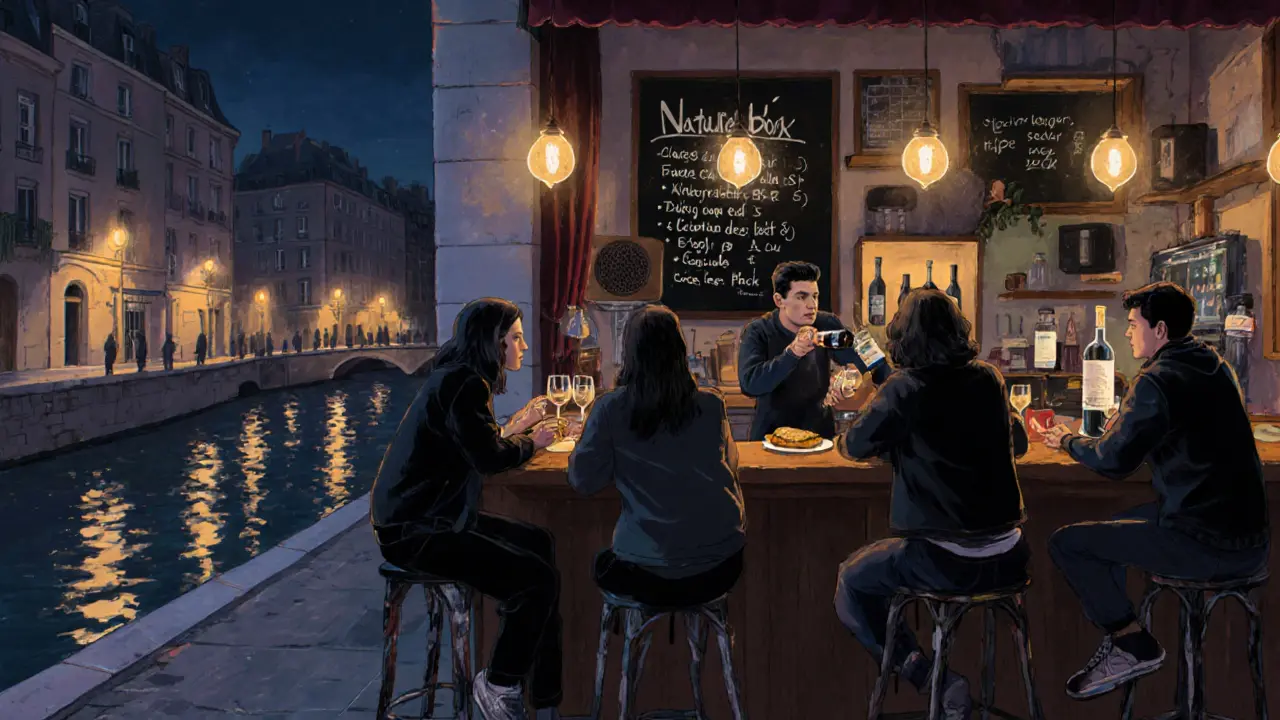
Midnight Snacks and the Art of the After-Party
In Paris, the night doesn’t end when the music stops-it just moves to the next place. And that’s where the real tradition kicks in: the petit déjeuner du soir, or midnight snack.Le Comptoir du Relais in Saint-Germain opens at 11 p.m. and serves oysters, duck confit, and wine until 4 a.m. It’s not fancy. It’s real. You’ll see a couple in matching trench coats eating fries with truffle mayo while a man in a beret argues about Balzac with the chef.
For something cheaper and just as good, walk to La Belle Hortense in the 11th. They serve croque-madame with a fried egg on top and a side of pickled beets. It’s €12. You eat it standing up at the counter while a French rapper plays on the speakers. No one rushes you. No one checks their watch.
What to Avoid in Paris After Dark
Not every place with a neon sign is worth your time. Here’s what to skip:- Bars on the Champs-Élysées that charge €20 for a beer and play Top 40 remixes
- "Parisian Cabaret" shows that promise "French can-can" but are just themed restaurants with dancers
- Clubs that require you to RSVP online or wear a dress code-most locals don’t bother
- Any place that has a sign saying "English spoken here"-if they’re trying too hard, they’re not authentic
The real Paris nightlife doesn’t advertise itself. It doesn’t need to. You’ll find it by walking, listening, and letting the city guide you.
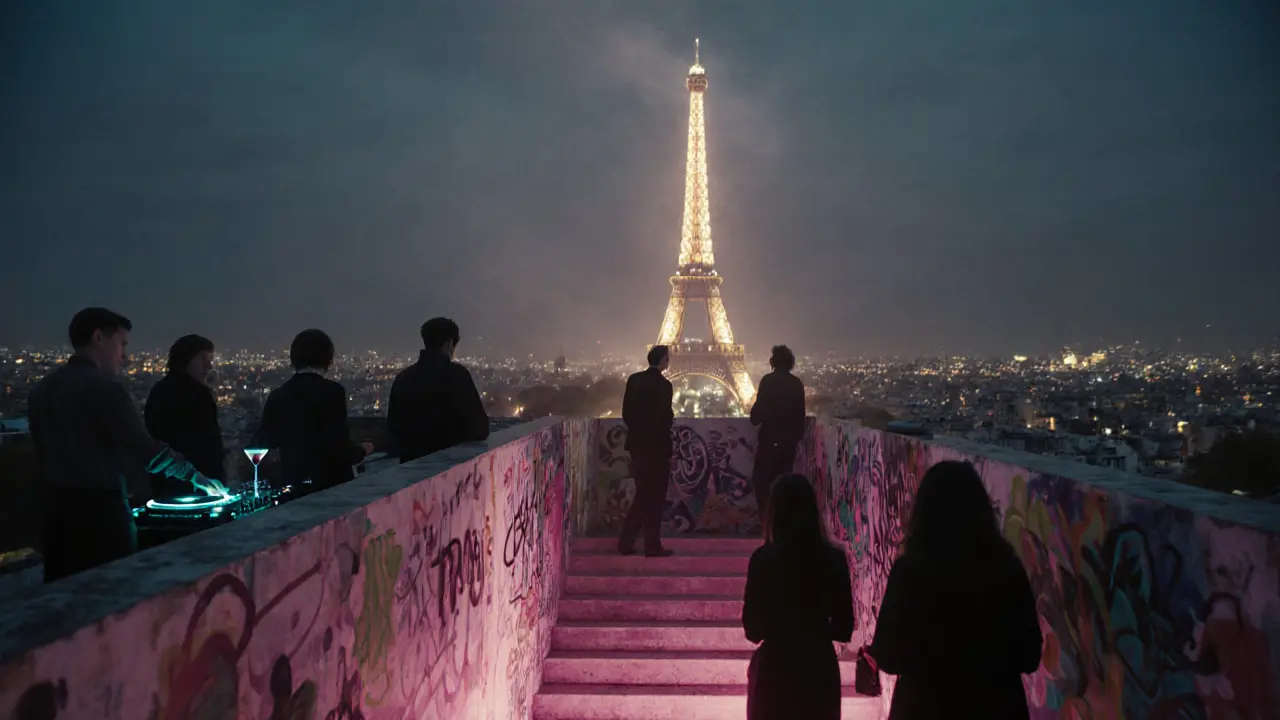
When to Go and What to Wear
Parisians dress for comfort, not status. You don’t need designer labels. A good pair of boots, a dark jacket, and clean jeans will get you into every bar worth visiting. Women wear scarves. Men wear beanies. No one wears shorts after 7 p.m.The best nights? Thursday through Saturday. Sunday is quiet-most places close early. Monday and Tuesday? Only the real regulars show up. That’s when you’ll find the best conversations.
Public transport runs until 2 a.m. on weekdays and 3 a.m. on weekends. The N15 night bus circles the city and stops near every major nightlife zone. If you’re out past 3 a.m., take a taxi. Uber is reliable, but it’s expensive. A 10-euro ride from Montmartre to the Marais is normal.
Why Paris After Dark Feels Different
This isn’t just another city with bars. Paris has a rhythm. It’s not about getting drunk. It’s about staying awake long enough to hear the city breathe. You’ll hear French poetry read aloud in a bookstore basement. You’ll find a jazz pianist playing in a subway station near Gare du Nord. You’ll see an old man with a violin playing Piaf songs on a bridge over the Seine.There’s no pressure to be loud. No one expects you to dance. You can sit alone with a glass of wine and watch the world pass by. That’s the gift Paris gives you after dark: the space to be quiet, to think, to feel alive without shouting.
Is Paris nightlife safe at night?
Yes, most areas popular with nightlife are safe after dark, especially the 1st, 5th, 6th, 9th, 10th, and 11th arrondissements. Stick to well-lit streets and avoid isolated alleys near Gare du Nord or the outer edges of the 18th. Like any big city, watch your belongings, but violent crime is rare in tourist nightlife zones.
What’s the best time to start a night out in Paris?
Most Parisians don’t start their night until after 10 p.m. Bars open around 8 or 9, but the real energy kicks in after 11. If you arrive at 8 p.m., you’ll be one of the few people there. Wait until 10:30 or 11 to feel the city come alive.
Do I need to speak French to enjoy Paris nightlife?
Not at all. Many bartenders and staff speak English, especially in tourist areas. But learning a few phrases-"Bonjour," "Merci," "Une bière, s’il vous plaît"-goes a long way. Locals appreciate the effort, and it often leads to better service, a free appetizer, or an invitation to a secret spot.
Are there any free nightlife experiences in Paris?
Absolutely. Walk along the Seine after midnight-street musicians, lovers, and poets gather under the bridges. Visit the Luxembourg Gardens at night; it’s quiet, lit by lanterns, and empty of tourists. Check out free jazz nights at the Institut du Monde Arabe or poetry readings at Shakespeare and Company. The city’s soul is free-you just have to be awake to find it.
What’s the most unique night experience in Paris?
The late-night book readings at Shakespeare and Company on the Left Bank. Every Thursday, a local writer reads poetry or short stories in English or French. The room is packed with students, expats, and travelers. You sit on the floor, sip cheap wine, and listen to words that make you forget you’re in a tourist city. It’s not on any guidebook. But if you ask the clerk, they’ll point you to the back room.


